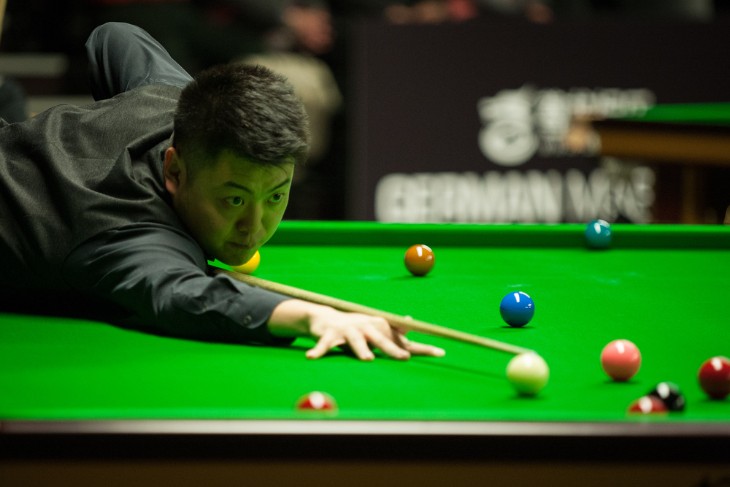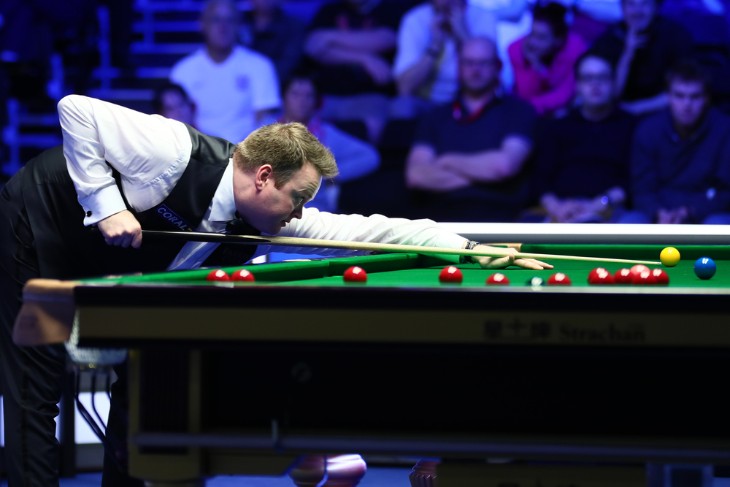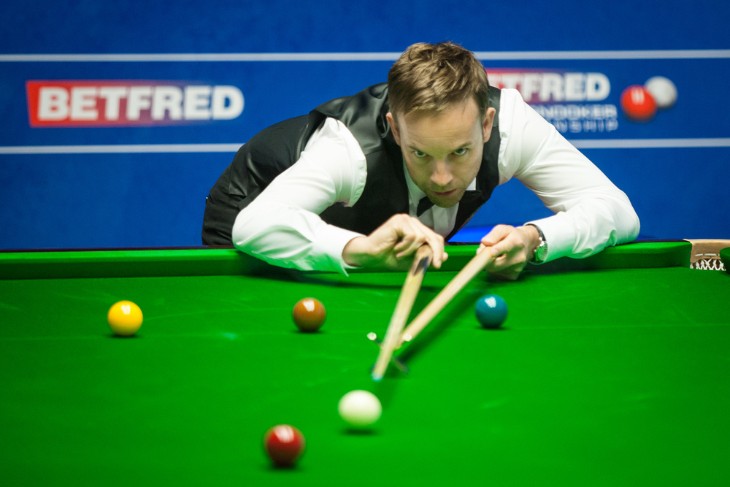- What Constitutes a Century Break in Snooker?
- The Skill and Precision Required for Scoring a Century
- The Historical Evolution of Century Breaks in Snooker
- Notable Century Break Achievements in Professional Snooker
- Comparing Century Breaks with Other Significant Scores in Snooker
- The Psychological Impact of Scoring a Century on Players and Matches
- Training and Techniques to Achieve Century Breaks
- The Role of Century Breaks in Snooker Tournaments and Rankings
- Take Away
In the world of snooker, achieving a 'century' is a feat that distinguishes the good players from the great. But what exactly is a century in snooker, and why is it so celebrated in the sport?
This article delves into the essence of this achievement, exploring its significance, how it is scored, and why it holds such an esteemed place in the hearts of snooker enthusiasts.
What Constitutes a Century Break in Snooker?
In snooker, a century break is when a player scores 100 points or more in one turn without missing. This is a big deal in snooker because it shows great skill and control. To make a century break, a player needs to pot a series of balls in a certain order, without making any mistakes.
The player starts by playing a red ball, which is worth one point. Then, they must pot a coloured ball. The colours have different points - yellow is worth two, green is three, brown is four, blue is five, pink is six, and black is seven. After potting a colour, the player goes back to potting another red, and so on. This pattern continues until all the reds are potted. Then, the player pots the colours in their order, from lowest to highest value.
Making a century requires the player to think ahead and plan their shots. They need to hit the cue ball in a way that sets up the next shot. This means thinking about angles, spin, and how the balls will move.
A century break is not just about potting balls. It's about doing it in a way that keeps the break going. The player has to keep good control of the cue ball, so it ends up in the right place for the next shot. This takes a lot of practice and skill.
Players who make century breaks often are seen as top snooker players. It's a sign that they have a high level of skill and are good at the game. In professional snooker, centuries are quite common, but they are still celebrated. They show that the player is playing well. Making a century can also give the player a big confidence boost during a match.
The Skill and Precision Required for Scoring a Century
Scoring a century in snooker is a clear sign of a player's skill and precision. It's not just about potting balls; it's about doing it in a way that sets you up for the next shot. This requires a lot of skill and a good understanding of the game.
Firstly, a player needs excellent cue control. This means being able to hit the cue ball exactly where and how they want. They need to control the speed and spin of the ball. This is important for positioning the cue ball for the next shot.
Planning is also key. Players must think several shots ahead. They need to decide which ball to pot next and where the cue ball needs to end up. This planning is what makes a good break builder. It's like a game of chess, where you need to think about future moves.
Accuracy is crucial. Players must pot each ball cleanly. Missing a shot can end the break. They need to be precise in both aim and power. Every shot matters in building a century.
Concentration is another important skill. Players must stay focused during their entire turn. This can be hard, especially in high-pressure situations. Keeping calm and focused helps players make good decisions and accurate shots.
Finally, a player needs a deep knowledge of snooker. They need to understand the angles, how the balls will react, and the best order to pot the balls. This knowledge comes from experience and practice.

The Historical Evolution of Century Breaks in Snooker
Century breaks in snooker have come a long way over the years. In the early days of snooker, scoring a century was rare. The tables were different, and the balls and cues were not as good as they are today. This made it harder to control the balls and score high breaks.
As time went on, the equipment improved. The tables became smoother, and the balls and cues got better. This made it easier for players to control the game. With better equipment, players could play more accurately and consistently. This led to more century breaks.
Training methods in snooker also changed. Players started to practice more and focus on improving their skills. They learned better techniques for potting balls and controlling the cue ball. This training helped players get better at making high breaks.
The standard of play in professional snooker has gone up over the years. Now, century breaks are more common. Top players often score centuries in matches. This shows how much the game has evolved. Players now are more skilled and consistent than ever before.
The increase in century breaks also shows how competitive snooker has become. Players need to score high breaks to win matches. This has pushed players to get better and better. Century breaks have become a key part of professional snooker. They show a player's skill and are exciting for fans to watch.
Notable Century Break Achievements in Professional Snooker
In professional snooker, there have been many impressive century-break achievements. These moments stand out because they show great skill and have made history in the sport.
One of the most famous is Ronnie O'Sullivan's fastest-ever 147 break. He did this in just over five minutes at the 1997 World Championship. This was an amazing display of speed and skill. It showed O'Sullivan's talent and why he is one of the best in snooker.
Stephen Hendry, another top player, has also made his mark with century breaks. He has scored over 700 century breaks in his career. This is a huge number and shows how consistent and skilled he was. Hendry was known for his precise play and ability to score high breaks regularly.
Steve Davis, a snooker legend, was one of the first players to make century breaks more common. In the 1980s, he set new standards for snooker. His technique and focus helped him score many centuries. This helped change the way snooker was played.
Another notable achievement was made by John Higgins. He scored a 147 break at the 2020 World Championship. This was special because it was his tenth career maximum break. It showed his high level of skill and experience in the game.
These players and their century breaks are important in snooker history. They have shown what is possible in the game. Their achievements have inspired other players and delighted fans. Century breaks are a big part of what makes professional snooker exciting. These moments of skill and brilliance are what many people remember and talk about.
Comparing Century Breaks with Other Significant Scores in Snooker
In snooker, century breaks are important, but there are other significant scores too. The highest score a player can get in one turn is 147, also known as a maximum break. This is when a player pots all 15 reds with blacks and then all the colours in order. It's the perfect break and is much harder to achieve than a century.
A century break, which is 100 points or more, is a big achievement. It shows that a player is playing well and can make a series of good shots. But a 147 requires even more skill and precision. It's a rare and special moment in snooker.
There are also half-century breaks, which are scores of 50 to 99 points. These are common in professional snooker. They show good play but are not as celebrated as centuries or maximum breaks.
Century breaks and maximum breaks are both signs of high skill. But players and fans see a 147 as the ultimate achievement. It's something special and exciting. Scoring a 147 is a big moment in a player's career.
In short, century breaks, half-century breaks, and maximum breaks are all important in snooker. They show different levels of skill. A century is great, but a 147 is the best. Each type of break has its place in the game and adds to the excitement of snooker.
The Psychological Impact of Scoring a Century on Players and Matches
Scoring a century in snooker can have a big impact on players and the match itself. For the player making the century, it's a huge confidence boost. It shows they are playing well and can dominate the game. This can make them more relaxed and focused. They feel more in control and this can lead to even better play.
For the other player, seeing their opponent score a century can be tough. It can be intimidating and put them under pressure. They might feel like they are falling behind. This can affect their confidence and how they play. They might try harder to catch up, which can lead to mistakes.
A century break can also change the pace of a match. It can make the game more exciting and tense. The audience gets more involved, cheering and reacting to the play. This atmosphere can affect both players. Some thrive on it, while others might find it distracting.
In team matches, a century break can lift the whole team. It can motivate the other players and give them confidence. It can also put pressure on the other team, making them feel like they have to work harder.
Overall, scoring a century can change the mood of a match. It has psychological effects on both players and can influence the outcome. It's a moment that can turn a game around, for better or worse.

Training and Techniques to Achieve Century Breaks
To achieve century breaks in snooker, players need to train hard and master certain techniques. It starts with practising cue control. This means being able to hit the cue ball exactly where you want. Good cue control helps with accuracy and setting up the next shot.
Players also need to work on their shot selection. This involves choosing the right ball to pot and the best order to pot them in. Good shot selection makes building a break easier. Players must think a few shots ahead and plan their moves.
Positional play is another key skill. This is about placing the cue ball in the right spot after each shot. Good positional play means the next shot is easier. Players need to think about angles and how the balls will move.
Practice is important for building consistency. Players spend hours at the table, potting balls and working on their technique. This helps them get better at making long breaks.
Mental strength is also a big part of training. Players need to stay focused and calm during their turn. They need to handle pressure and not let mistakes affect them. Mental toughness helps players keep going and make high breaks.
Lastly, players study the game. They watch matches and learn from other players. This helps them understand different strategies and ways to play.
The Role of Century Breaks in Snooker Tournaments and Rankings
Century breaks play a big role in snooker tournaments and rankings. In tournaments, scoring a century can be a key to winning matches. It shows that a player is in good form and playing well. When a player makes a century, it can put pressure on their opponent. This can give them an advantage in the match.
In some tournaments, there are special awards for players who make the most century breaks. This adds an extra challenge and excitement to the game. Players try to score centuries not just to win matches, but also to win these awards. It's a way to show their skill and earn extra recognition.
Century breaks also affect player rankings. Rankings are based on how well players do in tournaments. Players who make more century breaks often do better in tournaments. This helps them get higher rankings. A high ranking is important. It means players get into the best tournaments and play against the top players.
For new players, scoring centuries is a way to make a mark. It shows they have the skill to compete with the best. This can help them get noticed and move up in the rankings.
Overall, century breaks are important in snooker. They help players win matches and tournaments. They also affect rankings and can help players build their careers. Century breaks are a sign of top-level play in snooker.
Take Away
The century break-in snooker is a true symbol of excellence. It shows a player's skill, precision, and strategy. Scoring a century is about more than just potting balls; it's about mastering the game. Century breaks bring excitement to matches and are milestones in players' careers.
They reflect the high level of play in professional snooker. For players and fans alike, century breaks are a key part of what makes snooker thrilling and captivating.
For more information:




.webp)






